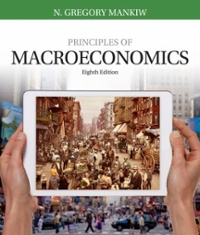Question
In his essay, Root Causes , the MIT economist Darren Acemoglu differentiates between good and bad institutions (27).Good institutions encourage investment and lead to economic
In his essay,Root Causes, the MIT economist Darren Acemoglu differentiates between "good" and "bad" institutions (27)."Good" institutions encourage investment and lead to economic prosperity, setting in motion of a virtuous circle of equitable development and inclusive political institutions."Bad" institutions concentrate wealth and political power in the hands of a small elite, setting in motion of a vicious circle of chronic underdevelopment and widespread poverty.
One of Acemoglu's key contributions is his insistence that these institutions are not natural or inevitable -they have a history.And that history is often the by-product of the colonial adventures of powerful European states: where the Europeans left behind a "good" institutional infrastructure - in the United States, Canada, Australia and New Zealand - today we find prosperity and democracy.By contrast, where the Europeans left behind a "bad" institutional infrastructure - in Sub-Saharan Africa, Latin America and Southeast Asia - today we find poverty and authoritarianism.
The purpose of your second policy memo assignment is to consider the economic and political path whereby a set of "bad" institutions can be effectively converted into a set of "good" institutions.In Part I of your memo, please describe the various laws, policies and institutions of "good" regimes.What are the characteristic features of these regimes, and why are they conducive to growth, prosperity and democracy?In Part II, please describe why the absence of these "good" institutions is so destructive of economic prosperity, individual well-being and political stability.Finally, in Part III, please describe how an extractive regime be converted into an inclusive one: What are the main impediments, both internal and external, for effective economic and political reform?What are the necessary preconditions, both internal and external, for effective economic and political reform?
Please make extensive use of assigned course material throughout your policy memo and be sure to provide practical examples whenever possible.You will also find a dossier of helpful supplementary resources posted to the Assignments section of Blackboard.Please pay close attention to the journal articles by Darren Acemoglu (with various co-authors), which discuss all of the key ideas and concepts of LSO121: the need to historicize institutions, the lingering impact of European colonialism (good and bad), the necessary ingredients for prosperity and democracy, and the path to effective economic and political reform in developing contexts.Regarding the final theme - the path to prosperity - please pay careful attention to Chapter 14 of Acemoglu and Robinson'sWhy Nations Fail, which describes the path to inclusive institutions in Botswana, the United States and China, and to Joseph Stiglitz's "Is there a Post-Washington Consensus Consensus?," which describes the international economic strategies conducive to the sustainable, equitable development of the world's poorest countries.
Step by Step Solution
There are 3 Steps involved in it
Step: 1

Get Instant Access to Expert-Tailored Solutions
See step-by-step solutions with expert insights and AI powered tools for academic success
Step: 2

Step: 3

Ace Your Homework with AI
Get the answers you need in no time with our AI-driven, step-by-step assistance
Get Started


